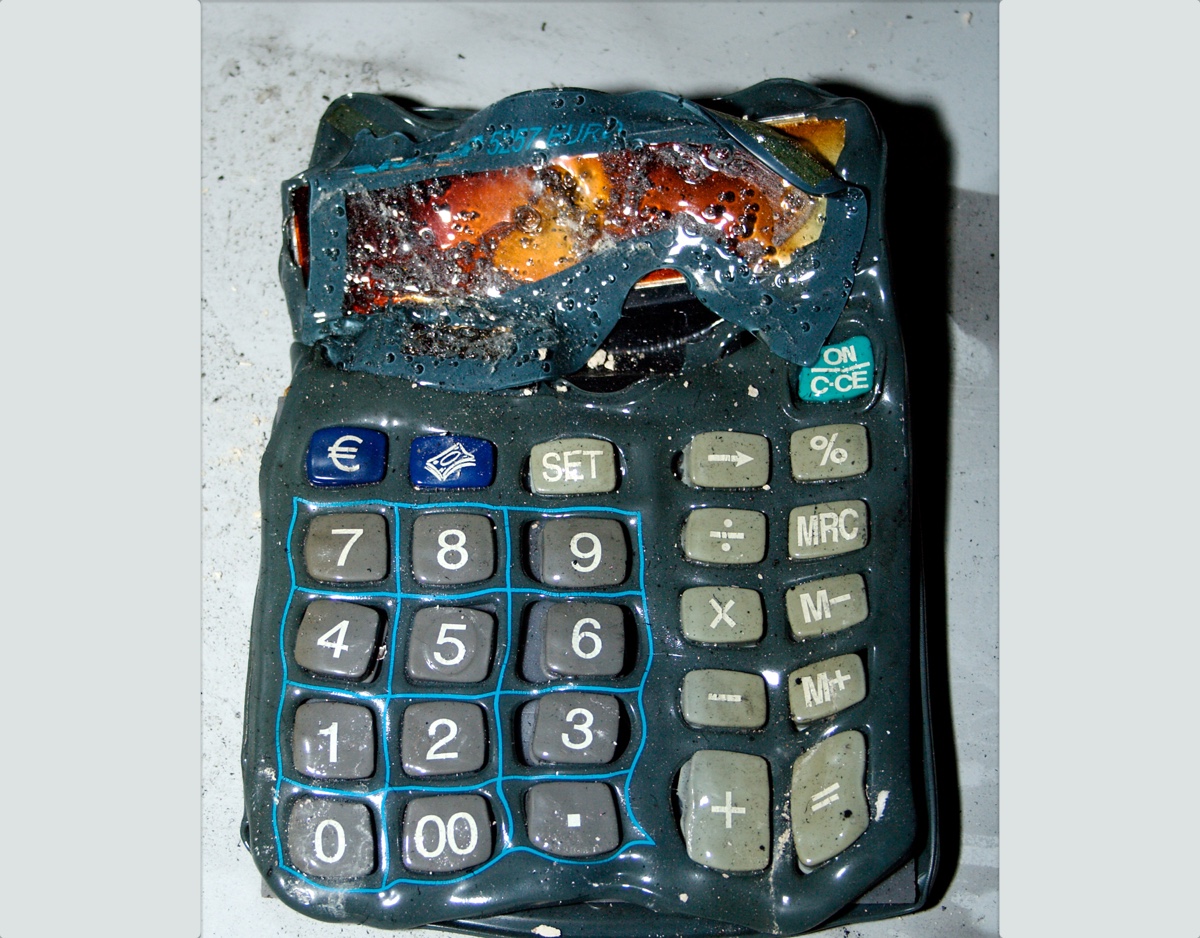Watch Acetone Vapor Melt a Calculator Like a Salvador Dalí Painting
Whoever said chemistry is boring hasn't seen YouTube user Amazing Timelapse's video showing a calculator melting into a surreal shape, reminiscent of a Salvador Dalí painting. Surprisingly, the calculator isn't melting at all, or even being heated.
It's literally dissolving.
In the video, Amazing Timelapse exposes the plastic calculator to acetone vapor, which can dissolve many types of plastics. Like other organic polymers, plastics are made of long-chain carbon-based molecules. That makes them incapable of dissolving in water, but vulnerable to organic solvents like acetone.
Water is a polar molecule, with a positive and negative end. And so when you plunk compounds that are also made of polar molecules — salt (sodium chloride), for instance — into water, the negatively charged parts of water (oxygen) tug on the positive molecules in the salt (sodium), while water's positively charged hydrogen molecules attract the salt's negative molecules (chloride). The result? The sodium and chloride get separated; they dissolve in the water. [More Chemistry Fun: How to Make Puffy Slime]
Plastics are different. The long carbon chains aren't polar — they don't have the same positive and negative sides. So water just bounces off the molecules and doesn't separate them from their fellows.
Acetone behaves differently with plastic, because acetone — which has the chemical formula (CH3)2CO — is not a polar molecule. That gives acetone a special power in relation to some polymers: It can knock them around and make the individual molecules in the polymer loosen their grip on their neighbors. According to the Open3DP website run by the University of Washington, plastics such as ABS (which legos are made of) or polyvinyl chloride (a component of piping) will start to lose their shape and cohesion. This is also the reason acetone is such a great superglue remover.
You could dissolve polymers in acetone like dropping sugar into coffee, or expose it to the vapor. Do that long enough, and the plastic on the outside of the calculator starts to absorb the acetone and effectively melt, creating a surreal and hypnotic sight. Only the metal and silicon components of the calculator remain intact.
Sign up for the Live Science daily newsletter now
Get the world’s most fascinating discoveries delivered straight to your inbox.
Amazing Timelapse, who wouldn't reveal his or her identity (or identities), chose the vapor route. To get the weird effect, they suspended the calculator inside a container; the background was just a green screen, they said. They aren't professional photographers or chemists, they said, adding that the dissolution experiment was just aesthetically interesting.

Originally published on Live Science.










